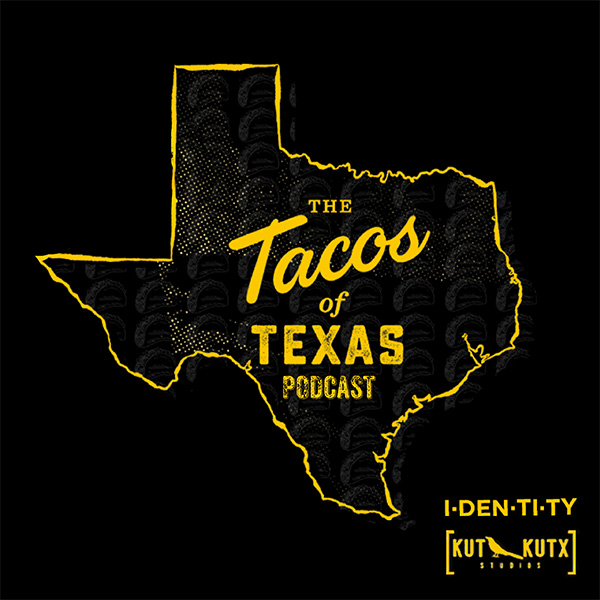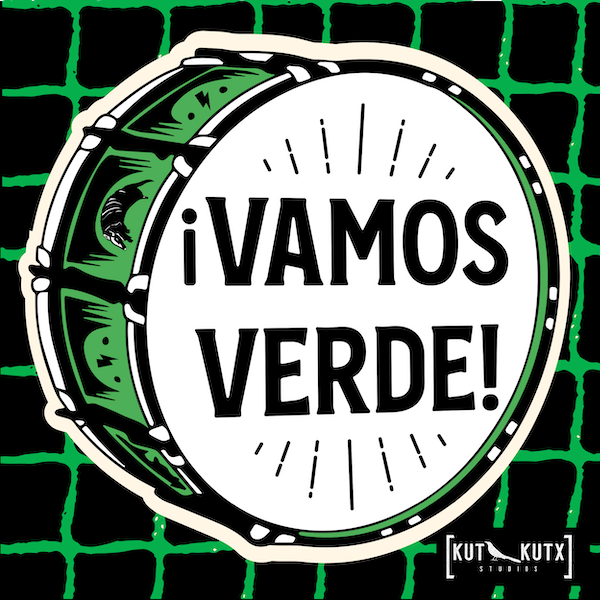Whole Hog Butchering with Chef Jesse Griffiths (Part 1)
Let’s take a class on whole hog butchering with Chef Jesse Griffiths, co-owner of Dai Due and learn the essentials of cutting a wild hog to prep for your favorite dish, from the shoulder to the tenderloin. From cabeza to colita, we’re getting real hands-on con estos maranitos. This is a two part episode, in part 1, we are doing a one-on-one interview with Jesse Griffiths and in part 2, we’re gonna let Jesse get to butchering in the whole hog class.
If you’d like to support the Tacos of Texas podcast and other podcasts like it from KUT & KUTX in Austin, please visit supportthispodcast.org. Thank you for your support!
The full transcript of this episode of Tacos of Texas is available on the KUT & KUTX Studio website. The transcript is also available as subtitles or captions on some podcast apps.
Chef Jesse Griffiths: Game is not a gimmick here. It’s not. It’s not some sort of esoteric treat. It’s part of it. And especially invasive animals like your feral hog nil guy. all that, things like that, that we choose to serve for reasons beyond just they’re delicious, but they’re also these invasive animals.
Mando Rayo: What’s up Taco World? I’m Taco Journalist Mando Rayo, and welcome to the Tacos of Texas podcast, El Cinco, produced by Identity Productions in partnership with KUT and KUTX studios. And we’re back exploring taco culture in Texas through the eyes of the people in the Lone Star state. grab some Chile corti una sores, and get ready for some Mui Tasty taco conversations[00:01:00]
In today’s episode of Tacos of Texas, I’m talking with Chef Jesse Griffith. Co-owner of Ddue, head of the New School of Traditional Cookery and one of the best wild game chefs out there from Cabrea to Colita. We’re getting real hands on, on Estos.
What’s up, MI Man here? And today we’re getting wowed with hugs. That is, trust me. This episode is not gonna be a bore ha. See what I did there? We’re stepping out of the taco truck and into the brush with one of the most respected wild game chefs out there, Jesse Griffiths. This chef isn’t just cooking it local.
He’s cooking it local. He’s hunting it, fishing it, butchering it, curing it, and turning it into something that makes your mouth say. I’ve been following [00:02:00] Jesse’s work for years from his days running ddu it to his latest obsession. Turkeys not the ones you get frozen from HEB, but the wild ones, the ones you gotta chase, outsmart, and honor with every bite.
Jesse’s all about knowing where your food comes from. He teaches people how to hunt and cook with care, how to respect the land and the animal, and how to keep traditions alive, not by putting them on a pedestal, but by putting them on your plateau. you might not find tortillas in this episode, but what you will find is Texas culture and a whole lot of.
It is taco time. And now here’s a word from our sponsor, Chuco Town going visit El Paso. It’s a hometown of this taco journalist. Looking for your next outdoor adventure. Discover the Franklin Mountains right in El Paso’s [00:03:00] backyard. Franklin Mountain State Park offers a unique blend of rugged desert landscapes, rich history, and diverse recreational opportunities.
As the largest urban state park in the continental us, it spends nearly 27,000 acres and provides over a hundred miles of trails for hiking, mountain biking, and rock climbing. Whether you’re a weekend warrior or just need a breath of fresh air, the Franklin Mountains are calling. Gracias to our friends at Visit El Paso for sponsoring this podcast episode.
Follow visit El Paso on Instagram and Facebook at visit El Paso or on their website@visitelpaso.com.
Jesse Griffiths is a Texas born chef, hunter, fisherman, and author. He’s the co-owner of DUA in Austin and the Mind Behind the Hog book, which won a James Beard Award and his latest. The Turkey book As [00:04:00] lead instructor of the new School of traditional cookery, Jesse teaches folks how to hunt, butcher, and cook with respect for the land, bringing local ethical food traditions to the table.
And recently, duit received a Michelin Green Star for sustainability and gastronomy. Today I’m stepping into his world with my knives out and Aron on to see what Ho Hawk butchering is all about. Thanks for letting me invite myself. Perfect. Perfect. tell me, tell me your story. how did you get started?
Chef Jesse Griffiths: It’s been a long time. it really has. it’s always shocking ’cause it was 2006 when we started this business. just really trying to explore. What local food meant here. what it meant to just use the resources around here, tap an idea from anywhere, butjust try to confine ourselves to what we could get from here and what that meant.
Kind. for a lot of different reasons for, there’s financial reasons, there’s cultural reasons, there’sreasons of just equitable workspaces. Things [00:05:00] like that. you can get, you can tap into anything. and it’s been a long time. And so westarted off with that, thethose ethos.
And then it’s kind of loose and specific at the same time. And thenbuilt it up over time. Brick and mortar opened in 2014, so we’rerapidly approaching our 11th birthday of theof this building. and it’s beenpretty wild. it’s been good.
Mando Rayo: Literally.
Wild,
Chef Jesse Griffiths: wild game, right?
Mando Rayo: when we think about locally sourced Think about what people are eating, and you’re talking about miles, right? Of local. So why a focus, on that?
Chef Jesse Griffiths: it’s connectivity and there’s, we don’t, don’t put there’s not a radius around this building that we choose to source from, but we try to keep it within Texas and much closer than the boundaries of Texas. and we’re able to get everything that we need that way. Maybe not everything that we want. Sure. But everything that we need. And that’s just the way it works. And really has a lot more to do with the people that we’re buying from and what we’re getting and [00:06:00] how that relates to how we steward the places that that food comes from.
Be it how our workers treated, pollution, Are we using too much of this resource? Right. Things like that. It enables us to make decisions that we can feel better about.
Mando Rayo: Now was there one, experience or was it a culmination of things that got you into cooking this way?
Chef Jesse Griffiths: Definitely. there’s two, and the first was I went to Italy and this is a food culture that’s known for being. very inventive and very well established. And also relying on their native and natural resources. I was in Italy. The first time I ever went there was in the depths of winter and they did not have very much going on, but they didn’t care.
That’s all they had. And they just used it. And it was still beautiful. And I was really impressed when I was there. I met a couple from Saltillo. Oh, okay. And they then invited me. [00:07:00] To come back. And I had this, very old world Italian experience In food where my mind was just getting blown left and right.
I couldn’t believe it, how good the food was, how simple it was, and how it was just very emblematic and representative of that place. And then I met this couple and they were, his, he was the, president of the Restaurant Association of Saltillo. Okay. And then he. He said his brother was getting married.
He’s like, come help cook for the wedding and work in my restaurant for a couple weeks. Nice. And at the time I was, I didn’t have anywhere to go. I didn’t have a job. I just kind of was just traveling in Europe and I was perfect. And I went back there and I experienced something so different, but yet so similar.
Right. It was more austere. There wasn’t, the, the, the land just didn’t give as much. Sure. It was a semi air. high desert, cool nights, right? But then there was still this incredibly beautiful cuisine based on their resources. And that’s, I was young and I, it started to [00:08:00] click, I started to get it.
I was this is amazing. It doesn’t matter where you are, right? People are inventive. They come up with beautiful things, and then they’ll, they’ll make the food sing nice no matter what it was. the first thing I had when I landed in, in Saltillo was This steamed goat head on a plate and a stack of tortillas and some salsa, and it was, it just blew me away.
And I was of course. Right. I did not have that in Italy because that’s not what they had. Right, right. But that’s what they have here. Yeah. And you make it beautiful and good.
Mando Rayo: Yeah. And when you think about that, you think about northern Mexico and South Texas, to be honest, right?
Yeah. Cato and a lot of the ranchlands and the farmland, but it’s also the, the land is also tough. It’s tough, right? Yeah. Right. And what’s, what’s, today we’re gonna learn about whole hog butchering, right? And what, what is the role of. Of the land play when you’re thinking about, let’s cook some up.
Right? Yeah,
Chef Jesse Griffiths: that’s, that’s such a great question and it so much defines what this restaurant is, not what this restaurant might [00:09:00] wanna be, but what it is. And that is, if you were to take this. Concept and drop it into Northern California. It would be completely different. Yeah. There would be some seafood, a little bit of meat, but it would be just so many vegetables.
here, of course, we grow vegetables. We grow beautiful vegetables in these alluvial valleys around Austin, central Texas. We’ve got beautiful Blackland soil to our east, but really Texas, the Hill country cross timbers. These areas are. Are very hard places. They are literally, they are covered in limestone and they don’t really, it’s not a great place for agriculture, therefore, it is a great place to raise animals.
our cuisine is deeply rooted in meat, be it wild game or ranching. the current state of Texas, that much of it. Wealth came from cattle. and from ranching and the history of that in northern Mexico as well is very, very [00:10:00] similar. And so you, you get this, this kind of running theme of meat here.
And it’s unavoidable. And the way and what we cook it over, which is burning wood. Because we also have a lot of trees. A lot of really, a lot of mesquite, a lot of mystique. And oak and pecan, and all these trees that when you burn ’em, they make things better, And they burn really hot, I love that within Texas you can go in within those different regions of trees and you can see how people cook differently. and that’s fascinating to me, is that when you get away from the mesquite, you start to cook. Things off to the side. And there’s more smoke. But then over the mesquite that’s hot.
You’re cooking directly over it and so the place defines what you’re gonna cook. And so here we’ve got a lot of beautiful vegetables, but really, it’s unavoidable to say that we’re not focused on meat. And game is not a gimmick here. It’s not. It’s not some sort of esoteric treat.
It’s part of it. And especially invasive animals your feral hog. Nil guy. all that, things like that, that we choose to serve [00:11:00] for reasons beyond just, they’re delicious, but they’re also these invasive animals.
Mando Rayo: I think part of the, when, when you think about, just whole hog and, and beef and cattle and, and what, how people use this land for generations,
For, you know. When you think about uh, boso in the ground. Yeah. Yeah. Uh, we got that from indigenous people that were cooking root vegetables. Right, right. And so now you’re thinking about that and, and it kind of giving that modern and local twist to it. Certainly.
And so why, why is it important for, if somebody’s oh, I’m gonna go, go buy something at HEB, why is it important for them to really think about, uh, locally sourcing? Well,
Chef Jesse Griffiths: it’s. It’s, it’s your lamp. This is where we all live. We gotta take care of it. If you don’t have a vested interest in the food that’s being raised here, let’s say for instance there’s a farm and it’s, it’s, it’s where you have to get your strawberries.
Yeah. And it’s in [00:12:00] danger of being polluted from some entity upstream, but it’s the only place that you can get strawberries. Then you care deeply about that pollution. Yeah. But if you get your strawberries from somewhere else, all of a sudden we don’t care as much. And so you, you become a steward of your region by consuming your region’s resources.
Yeah. And so I think it’s really important. You might not have to do it all the time, and it’s almost impossible to do it all the time. Sure. System’s not set up for it. Now, ideally, in my mind. Utopian style, it would be because it would force us into, regarding these resources a lot and stewarding them a lot better than we do.
Right, right. And also, yeah, you make an excellent point with how, indigenous peoples interacted with this land Yeah. And how important those resources were to, to them. Mm-hmm. Important would be an understatement. Yeah. it was life or death. Yeah. Yeah. It might be, there was hunting wasn’t fun.
Yeah. it might’ve been fun, hopefully as an [00:13:00] aspect of it, but. It was, it was life or death. Exactly. Yeah. Yeah. Yeah. And so, and, and, pay respect or take a cue from that. Yeah. how easy we got it. But I think about people especially that live along the coast here.
Sure. You know how hard that must have been? The severe weather, the dangers, right. The mosquitoes. The mosquitoes themselves, but also, what did they eat? Fascinating. It’s they, pre-Columbian, they’re eating. Deer and lots and lots of shellfish and whatever fish they can catch and whatever, wild green, sea beans and things that, that they can gather.
And to me it’s that stuff still is out there. It’s still there, right? That’s really cool to
Mando Rayo: me. that’s really cool. So tell us what, what can we expect today? I know you have a class going. I’m, I’m gonna be participating in it. So what, what are you trying to showcase in today’s, class?
Chef Jesse Griffiths: we, we kind of. Live in these two worlds, one being restaurant and one being hunting culture. we’ve, we’ve somehow kind of become integrated, I say somehow very [00:14:00]purposely, become integrated in that. And within that, there’s a topic that I find to be, that really bridges both of those.
And that’s feral hogs. Feral hogs, were brought here by the Spanish in the late 14 hundreds, I’m sorry, 15 hundreds. they. Have thrived all over the United States, but especially in Texas. they’re, they’re a problem. They’re invasive, they’re highly destructive. They destroy waterways, agriculture, name it, they’re kind of a, they’re an issue.
But we’re, luckily for us, they’re highly edible. they present this problem that actually has a kind of a fun solution to it too. we. I feel there’s almost an educational need to present them as food because a lot of people distrust them. As food or there’s a lot of myth and
Disinformation out there about their edibility. if you can put them in a restaurant form into a familiar dish or, or serve somebody something really nice That’s made out of that, then maybe that’ll translate to them consuming that [00:15:00] down the road. The consumption of feral hogs, I think has almost these three tiers of, of effectiveness not being, you’re eating a invasive species.
Mm-hmm. You’re in doing so creating more habitat, improving Water quality, all these other things, by removing it from the landscape. But then the third one is, is every pound. Of meat that you can replace from a somewhat broken food system, from a confined animal feeding operation and so forth.
Every pound of meat that you can replace from that system and then instead consume that invasive mm-hmm. Is a third, a tertiary wind. And so feral hogs, or of a lot of interest to people here. I’ll take a brief survey at the beginning class. I’m not asking anybody’s name, but I will ask them.
If they hunt or if they have access to the meat of feral hogs, Uhhuh and I, 75% plus typically do. Okay. But they’re just, most of the people that come to this class are very curious [00:16:00] about how to go about, preparing feral hogs. Which isn’t necessarily tricky, but I’ve had 15 years of practice doing it.
And people are maybe intimidated by it or something. And then we’re here to. Demonstrate in the most concise way, how to help them achieve success. Nice. And breaking them down, cooking them and so forth, so that they enjoy that resource more. And hopefully that just radiates
Mando Rayo: out. And ultimately, you want them to walk away with a new, new perspective too.
That they can share with their community, right? absolutely. Love it. Love it. And then recently you were named, from the Michelin Guide, got a Green Star, right? Mm-hmm. what does that mean for, for you?
Chef Jesse Griffiths: Oh, it’s great, because I, I don’t feel that this is a Michelin star restaurant in the traditional Michelin Star Sense Uhhuh, but they created the Green Star, which is a sustainability award, and honestly, it felt [00:17:00] great to get recognition for.
Exactly what we do. Because this is not a white tablecloth, fine dining, right? Everything is perfect restaurant. I mean, there’s a lot of imperfections here because we deal with, commodities that are always different. weather, heat, Floods. Everything takes its toll on this and we deal with it the best we can and I feel that Green Star was a real acknowledgement
Mando Rayo: of our work.
Yeah. No, that’s beautiful and congratulations for that. Thank you. Yeah. Now, is there, somebody comes to the restaurant, is there one dish that you’re like, okay, this represents us?
Chef Jesse Griffiths: Yeah. Probab. I mean, it’s either gonna be, I’d say maybe the wild boar comb fee. Okay. You know, we’ve been serving that almost since day one.
Mm-hmm. Here, and it’s, it is, again, it’s a, it’s a way for us to present feral hogs and. A way that people probably haven’t had. It’s a cube of seared. Mean. It’s been shredded. It’s very much, it’s, it’s caritas, carita, [00:18:00] it’s pressed into a cake and then sea. How do you
Mando Rayo: have the fat?
Chef Jesse Griffiths: Yeah. And yeah, it’s, it’s what it is, you know?
Yeah, yeah, yeah. And it’s seared. Um, and so you get the, it’s very crispy on the outside and just super tender and flavorful, but we don’t do a lot to it. So you still taste it. And then we serve it in a broth made from the bones of the feral hog. Nice. And then whatever’s in seasons on top, there’s always something sweet.
There’s always something spicy. Everything here is spicy. Oh, okay. we, well, Texas is a spicy place. Yeah. I mean, it’s peppers. If you see, we’ve got dried peppers everywhere. Yeah. Uh, we placed an order today for 6,000 pounds of peppers that will only be made into paprika. Oh, wow. We, we smoke and dry our own paprika.
Um, and right now it’s super spicy.
Mando Rayo: Yes. It’s, I have this little bush in my backyard of, uh, chili King.
Chef Jesse Griffiths: Yeah.
Mando Rayo: And I just made a, um, uh, esche with it. Yeah. And it’s done.
Chef Jesse Griffiths: I’ve got two wild plants at my house and we have about four or five plants back here. I’ll tell you a funny story is when new cooks come on here, [00:19:00] I take ’em out back to try the honey peppers.
Okay. And I’ll pick two of ’em and I’ll ask if they’ve ever had honey peppers before, and then I’ll eat two of them. And then I tell ’em they taste just honey, and then they eat one. And then. It’s just it’s a little game that I play. It’s not the nicest thing that I’ve ever done, but
Mando Rayo: the chili challenge.
Yeah.
Chef Jesse Griffiths: I love the, the chili taping. I put a whole, there’s a two page spread in my last book about the history of that chili and how it is the Genesis Pepper, all other peppers derived from that pepper. Right, right, right. And it’s pretty amazing. And there’s some beautiful, artwork that was done by a woman who lived in Austin.
And, she, She painted, some beautiful chitin, for this book called Peppers. Oh, okay. She wrote an entire book about peppers. That’s amazing. Anyway, we digress. I love peppers. Awesome. Me too. Me too. I’m
Mando Rayo: here for it. I’m here for it. I’m here to, for the class, I’ve cooked a lot. actually, I have cooked, feral hog before, but we never butchered it.
Never seen it. Mm-hmm. I’m ready to kind of, dig in.
Chef Jesse Griffiths: It’s gonna be fun. [00:20:00] We’ve been doing this class for. 14 years. Wow. And it’s always different. Every time. it depends on thedepends on the group. And the hog. Depends on the hog. We got two hogs. We got two hogs. I just ask the guy that provides us with the hogs, I’m just gimme two different ones.
Okay. I don’t really know What they’re gonna look like. I kind of go into the reasoning behind not knowing what they look like. Okay. in the class challenge. A good challenge. I wanna be surprised by them. it should be fun. It’s always fun. It’s one of my favorite things to do.
Mando Rayo: Well, well thanks so much for, letting us be here and I’m excited to get started.
Yeah.
I love getting to know the people behind the places, and that includes Jesse Griffith, hunter Butcher, outdoorsman, and an advocate for sustainable food cultures and Tejas. Getting to know Jesse and learning more about his journey from Cook to Hunter and author to teacher, really brought to life the [00:21:00] commitment he has.
To his craft, and I appreciate the Ghana he has for doing that. So thank you Jesse Griffiths for being on the podcast and sharing your story. This has been part one of the whole hog butchering episode. In our second episode, we’re gonna let Jesse Cook or get to butchering. That is, we’ll go deep into the cuts with Jesse Griffiths.
So keep listening. And with that, I want shout out some of the places that are relevant to this episode. So obviously, that are really focusing in on whole hog cooking. We have Coy barbecue out of Houston, Texas Barbecue FIS in HU Texas and Caritas RO in Austin, Texas. This has been the Tacos of Texas podcast developed and produced by Identity Productions.
If you enjoyed today’s episode in our craving more taco content, go to our website at www dot identity dot. Productions or follow us on Instagram, Facebook and YouTube at Identity Productions and United [00:22:00] Tacos of America. This is your host, Mando El Taco, journalist Rao, ba tacos.
On the next proximal tacos of Texas in part two of whole hog butchering. We’ll go deep into the cuts as I take a class with Chef Jesse Grits.
Louisa Van Assche: The Tacos of Texas podcast is presented by identity productions in partnership with KUT and KUTX studios. Our host and producer is Mando. Our audio is mixed by Nicholas Weden.
Our story producer is me, Louisa Van. And our creative producer is Dennis Burnett. Music was created by Peligrosa in Austin, Texas, and King Benny Productions located in the Quinto Barrio of Houston.
This transcript was transcribed by AI, and lightly edited by a human. Accuracy may vary. This text may be revised in the future.





